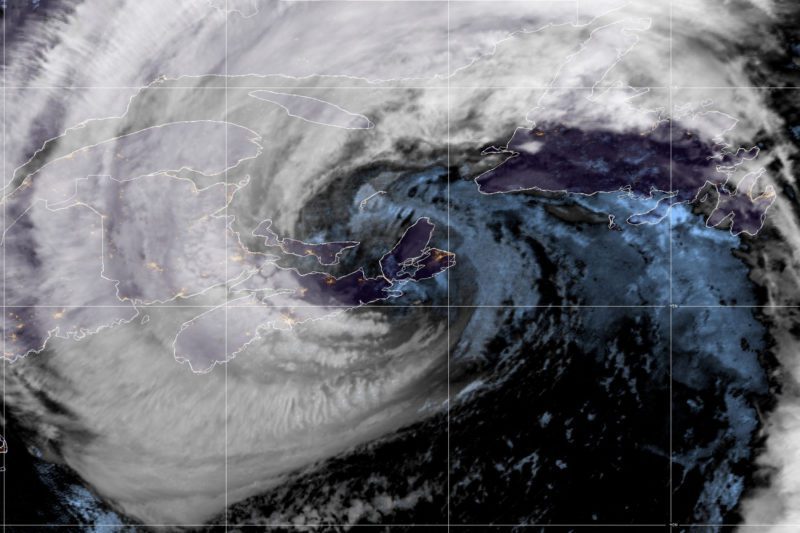Fiona, the most powerful storm of this year’s Atlantic hurricane season, roared ashore in eastern Nova Scotia early Saturday as one of the strongest systems ever to hit the region, bringing tree-toppling winds and potentially devastating flooding.
The storm, which ravaged the Dominican Republic and Puerto Rico earlier this week, made landfall on the Canso Peninsula near Hart Island with winds of 90 miles per hour, according to the US National Hurricane Center. It’s expected to unleash flooding rains across Nova Scotia, Prince Edward Island, Newfoundland and Labrador.
“This could be the worst storm they have ever seen” in Canada, said Don Keeney, a meteorologist at commercial-forecaster Maxar.
Hurricane Fiona makes landfall between Canso and Guysborough, Nova Scotia, Canada in a composite image from the National Oceanic and Atmospheric Administration (NOAA) GOES-East weather satellite September 24, 2022. /Handout REUTERS
Fiona is a potent sign the Atlantic hurricane season is roaring to life after months of quiet. The Atlantic didn’t spur a single tropical storm during August. Now September has given rise to three hurricanes, with a fourth threating to form and strike Cuba and Florida next week. Forecasters have warned it will be an unusually busy season as climate change fuels more frequent and powerful storms.
Fiona’s winds peaked earlier this week at 130 mph, making it a Category 4 hurricane and the Atlantic’s strongest storm of 2022. It knocked out power across all of Puerto Rico Sunday and caused outages, floods and landslides on the Dominican Republic Monday as it moved north. The storm took a swipe at Bermuda Friday before bearing down on Canada.
By 5 a.m. in Nova Scotia, Fiona was moving across eastern Nova Scotia and into the Gulf of St. Lawrence. Forecaster expect the storm to move across Labrador and over the Labrador Sea on Sunday. As much as 13 inches (33 centimeters) of rain could fall in parts of Atlantic Canada, raising the flood risk, said Matt Rinde, a meteorologist at commercial-forecaster AccuWeather Inc.
“There is going to be a good push of water based on the position of the storm,” Rinde said.
Fiona could cause between $1 billion to $1.5 billion in damage in Canada, based on its current forecast, said Chuck Watson, a disaster modeler with Enki Research.
The storm in the Caribbean is on track to pass just west of Havana and strike Florida near Fort Myers. There is a chance the track will change, potentially shifting further west into the Gulf of Mexico. The storm’s current forecast keeps it away from offshore oil and natural gas production in the western Gulf.
The storm could cause about $12 billion in losses in western Florida and Cuba, Watson said. The damage could be particularly harsh for citrus growers, who are just about to start harvesting their crops.





